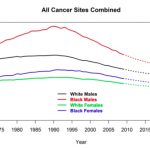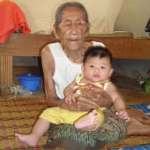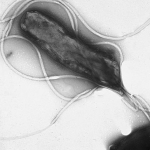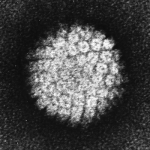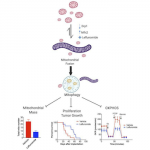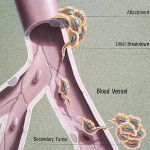A large study just found that there was little, or no, evidence of cancer linked to the use of hair dye. But one of the most common dyes, para-phenylenediamine, could be reasonably expected by a chemist to be carcinogenic because of the conditions used in the dying process. Even though it's not. Here's why.
cancer
A study that found basically no link between hair color or dye use and cancer predictably was sensationalized by the media anyway.
There is a lot of malicious misinformation on the internet about glyphosate. Much of it comes from academia.
The Fox News host says cell phones cause cancer and the Wuhan coronavirus (COVID-19) might have escaped from a biological weapons lab. Both claims are ridiculous.
This article is the second in a three-part series that is adapted from an essay written by Dr. Alex Berezow, now archived at Suzzallo Library's Special Collections at the University of Washington. In Part II, he discusses how aging and cancer are two sides of the same biological coin.
Infectious diseases, such as influenza and tuberculosis, kill millions every year. But an infectious disease can kill in another way: by causing cancer. The good news is that many of these infections are preventable or treatable.
A new study suggests that there is no safe amount of alcohol that can be consumed. Do the flaws of the study mean we can ignore the findings? Pour yourself a glass and read on.
Scientists have discovered molecules that inhibit tumor growth by starving cancer cells of their favorite foods: the sugar glucose and the amino acid, glutamine.
The nine-valent HPV vaccine -- which targets nine different HPV strains -- could prevent about 3 in 4 HPV-associated cancers. However, only about half of all adolescents have completed the vaccine series. If everyone was fully vaccinated we could prevent some 32,100 cancers each year.
A story making headlines claims that this fast-food chain is using chemicals that could give you cancer. Ignore them. If you need something to worry about, then focus on possibly getting food poisoning from one of its burritos.
In the most common type of pancreatic cancer, the abnormal cells contain highly fragmented mitochondria. New research suggests that they can serve as a novel target in the treatment of pancreatic cancer.
Just as the Roman roads helped the Visigoths run roughshod over Southern Europe, cancer’s invasion of distant organs exploits literal veins and arteries. This has implications for treatments and cures.
